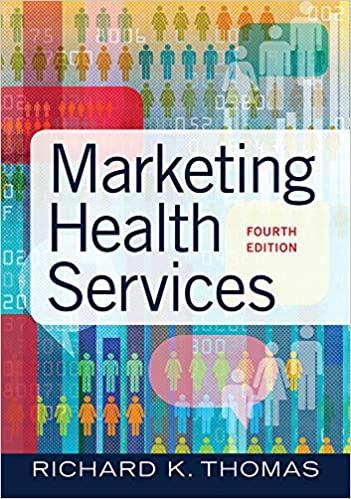Southwest Regional Medical Center (SRMC) believed it could boost its orthopedic presence by establishing a service line
Question:
Southwest Regional Medical Center (SRMC) believed it could boost its orthopedic presence by establishing a service line called the Orthopedics Center of Excellence. To support the center, SRMC recruited three new physicians; bought state-of-the-art equipment; renovated a nursing unit; added nurses and technicians; developed a dedicated web page and linked it to the enterprise website; conducted educational programs for referring physicians; made sales calls to primary care physicians; published articles in local publications; and advertised on radio, on television, in newspapers and magazines, and on the internet and social media. The total investment in the first year for programmatic changes and marketing was $1.6 million.
To determine ROI for the center, SRMC compared the increase in the center’s first-year income with the incremental revenue the orthopedics services generated. In the 12 months before the center was established, orthopedics-related services generated $4.5 million in net revenue. In the 12 months after the center’s launch date, the center generated $7.9 million in net revenue. On the basis of incremental gain and net revenues, SRMC realized ROI of 76 percent. This figure assumes that the gain resulted from the center’s creation and would not have occurred otherwise.
Some argued that in addition to direct investment in the service line, indirect contributions (e.g., spillover services provided by other departments) should be figured into the calculation and added to the total cost. SRMC’s administrators asked the marketing team to isolate ROI for the programmatic investments and marketing expenditures. The team found this task extremely difficult, given the extent to which the different aspects of the service line were intertwined. The marketing team determined that it would need to employ more sophisticated accounting processes to factor out ROI for specific components of the service line.
This case highlights the pitfalls of taking ROI analysis too far. Calculating ROI for the entire investment makes sense, but attempting to calculate ROI for every element probably does not. SRMC concluded that its evaluation efforts would be better spent developing other indicators of tangible and intangible benefits of the service line initiative, such as the public’s top-ofmind awareness of the center, new referral sources, consumer inquiries, and so forth. Although SRMC was pleased with the overall ROI generated through enhanced operations and the multipronged marketing effort, it was justifiably cautious about carrying ROI analysis too deep into the program.
Questions
1. What factors influenced SRMC to consolidate its orthopedic services under the service line model?
2. What programmatic changes were made to establish the center?
3. What marketing options could SRMC have considered, and why do you think it chose the options it did?
4. Aside from net revenue, were there other tangible and intangible measures that SRMC could have used to evaluate the campaign?
5. What caveats must be observed when trying to isolate ROI for program components?
Step by Step Answer:






